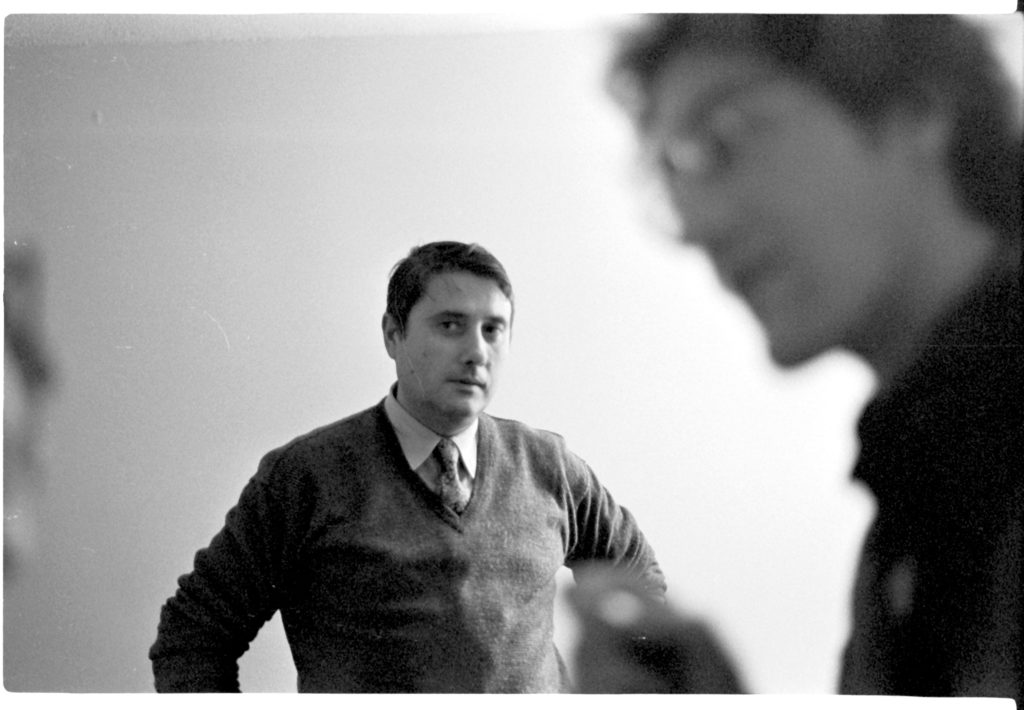paolo cardazzo award
first edition 2021

Paolo Cardazzo in the seventies (photo by Gabriella Cardazzo)
The award ceremony for the 2021 Paolo Cardazzo Prize took place yesterday in Venice.
The Prize was instituted by Gabriella Cardazzo in memory of her brother. In 2021 it is in its first edition, which relies on the support of the Artspace association and Trieste Contemporanea and the collaboration of Luigino Rossi. It is a prize for the production of an artistic project, a type of prize still quite rare in Italy. It provides for a contribution of € 5,000 to be awarded to an artist under the age of 40, who has been invited to submit for the award a project of an unpublished work that can be created through the different expressive forms of the contemporary.
For the first edition, an international group of expert selectors proposed 18 applications by artists from Bosnia, France, Great Britain, Italy and Serbia.
The selection committee was composed by: Claudio Ambrosini: visual artist and composer. Golden Lion at the 51st International Festival of Contemporary Music at the Venice Biennale (Italy); Mario Sillani Djerrahian: creative photographer and anthropologist of the image, former President of the La Cappella Underground Center in Trieste (Italy); Manuel Frara: researcher between image and sound. He teaches visual arts at the Academy of Fine Arts in Venice in the Chair of Painting (Italy); Carlo Montanaro: film historian. Professor and Director at the Academy of Fine Arts in Venice and founder of the Fabbrica del Vedi in Venice (Italy); Helmutas Šabasevičius: artist who offers new proposals between visual art and theater (Lithuania); Leon Tarasewicz: artist, formerly present at the Venice Biennale International Art Exhibition. He teaches at the Academy of Fine Arts in Warsaw (Poland); Gian Carlo Venuto: professor of visual art and color theory at the Academy of Fine Arts in Venice, Milan and Turin (Italy); Andrzej Wełmiński: actor and set designer. He participated, from 1973 to 1990, in the theatrical performances of the Cricot 2 Company directed by Tadeusz Kantor (Poland); Alberto Zanchetta: art critic and curator. Director of the Museum of Contemporary Art in Lissone. He teaches at the Academy of Fine Arts in Urbino (Italy).
The recruiters were asked for the same form of freedom of choice in identifying new possible perspectives for the realization of a project that brings art back to the center of meanings and values for the human being.
The jury composed of Giuliana Carbi Jesurun, Gabriella Cardazzo, Fulvio dell’Agnese, Luigino Rossi, Catherine Thieck and Janka Vukmir decided to assign the prize ex aequo to the Italian artists Silvia Hell for the project Non c’è opera d’arte che non faccia appello a un popolo che non esiste ancora and Giulia Iacolutti for the project Dopamina. Uno studio visivo sugli ormoni dell’amore, artists invited respectively by Alberto Zanchetta and Gian Carlo Venuto. The jury, congratulating on the high level of all the projects received, also decided to report with a special mention the works of Enrico Antonello, Furio Ganz and Mattia Ruffolo, Davide Mancini Zanchi, Miriam Montani, Genevieve Murphy, Francesco Poiana and Dominik Ritszel.
The awards ceremony saw contemporary art experts and authoritative Venetian representatives of the sector present. It was also decided that a catalog of the projects of the winners and the artists who received the mention will be published. As for the exhibition of the winners envisaged by the Award, Trieste Contemporanea will inaugurate the exhibition on 21 October 2022 and the exhibition can be visited until 16 November.
Paolo Cardazzo (Venice 1936 – 2011) from 1966 to 1994 (until 1987 with his sister Gabriella) directs the Cavallino gallery in Venice (opened by his father Carlo in 1942), extending the interest of one of the important Italian historical galleries to experimental experiences of video art. Paolo, using the first not yet professional videotapes at the end of the 1960s, led Il Cavallino di Venezia to be one of the three major Italian centers that in the 1970s dedicated themselves to research and artistic production through this new medium involving Italian artists (Vincenzo Agnetti, Claudio Ambrosini, Anna Valeria Borsari, Pier Paolo Fassetta, Michele Sambin, Guido Sartorelli, Mario Sillani, Luigi Viola) and foreigners (including Marina Abramović, Douglas Davis, Les Levine). The Cavallino then produced (up to 1981) almost 150 works that had a notable national and international circulation, some of which mark the history of this language.